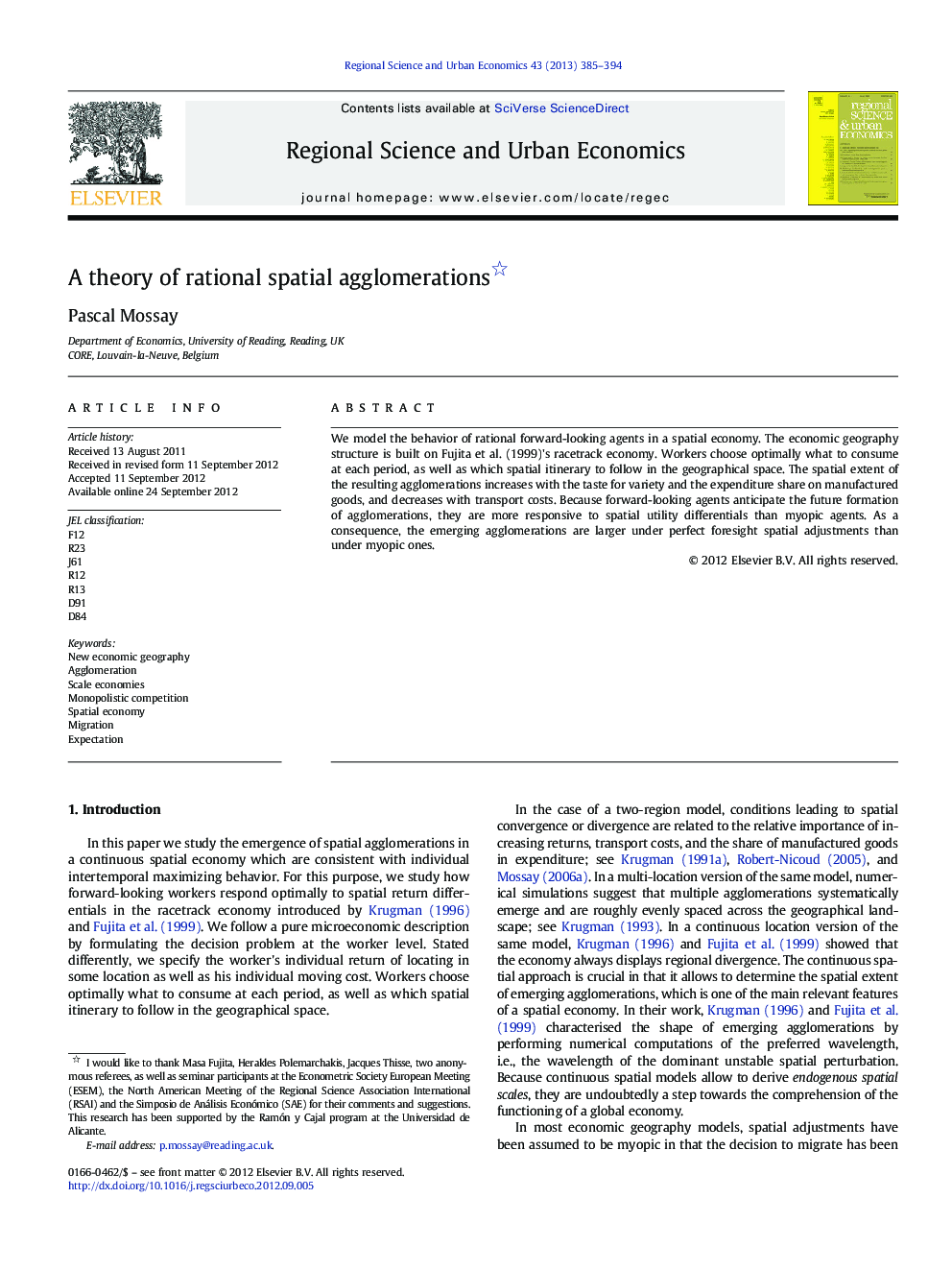| Article ID | Journal | Published Year | Pages | File Type |
|---|---|---|---|---|
| 983972 | Regional Science and Urban Economics | 2013 | 10 Pages |
We model the behavior of rational forward-looking agents in a spatial economy. The economic geography structure is built on Fujita et al. (1999)'s racetrack economy. Workers choose optimally what to consume at each period, as well as which spatial itinerary to follow in the geographical space. The spatial extent of the resulting agglomerations increases with the taste for variety and the expenditure share on manufactured goods, and decreases with transport costs. Because forward-looking agents anticipate the future formation of agglomerations, they are more responsive to spatial utility differentials than myopic agents. As a consequence, the emerging agglomerations are larger under perfect foresight spatial adjustments than under myopic ones.
